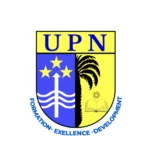Behind any successful project stands a project manager worth his or her weight in gold.
The widespread belief that their sole job is to remind everyone about deadlines and set up status meetings doesn’t do these professionals justice.
So what do you do as a project manager? Basically, you’re responsible for planning, organizing, and directing the completion of a specific project while ensuring it is on time, on budget, and within scope.
It takes a serious amount of knowledge to execute a project successfully. You can obtain it by enrolling in an online MBA in project management program.
To bring a company’s workflow under control, project managers need to have a deep understanding of the project management processes and phases that make up a project life cycle.
Project management life cycle phases should define what work must be accomplished, along with the deliverables and ways of controlling each phase.
In this article, we’ll cover what each of the project management steps entails so you get a better idea of how it looks to take a project from start to finish.
5 Project Management Stages
So, what are the stages of a project? There is five of them in total, and they come in the following order:
- Project Initiation
- Project Planning
- Project Execution
- Project Performance/Monitoring
- Project Closure
Project Initiation
The first task project managers are faced with is to agree on the idea of a project; to come up with the concept and decide if it will be taken further than the drawing board.
This is when measuring the project’s value and feasibility takes place. The two most commonly used evaluation tools include:
- Business Case Document
It justifies the need for the project, and also includes an estimate of potential financial benefits;
- Feasibility Study
It represents an evaluation of the project’s goals, timeline, and costs to determine if the project should be executed. It helps project managers balance out the requirements of the project with available resources to see whether pursuing the project benefits the company or not.
Of course, important stakeholders will have their say in deciding if the project is a “go.” If they decide that value is worth the perceived difficulty, project managers get to create a project charter or a project initiation document that outlines the purpose and requirements of the freshly approved project.
Project Planning
This phase is key to successful project management: Once the project receives the green light, it’s time to make a well-written project plan to guide the team through the project management process while keeping them on time and budget.
Apart from providing guidance for obtaining resources, acquiring financing, and procuring required materials, the project plan also prepares teams for the obstacles they might encounter throughout the project.
Project planning typically begins with setting goals, and the two popular methods for that are known under acronyms SMART and CLEAR.
The SMART Method
This method reduces risk by ensuring that the goals are critically analyzed, allowing managers to make clearly defined and achievable goals.
S.M.A.R.T. Stands For:
- Specific – Setting specific goals by answering the questions: who, what, where, when, which, and why.
- Measurable – Creating criteria for measuring the progress and success of a goal.
- Attainable – Identifying the most important goals and ways to achieve them.
- Realistic – Ensuring that everyone is willing and able to work towards a given goal.
- Timely – Creating a timeframe for achieving the specific goal.
The CLEAR Method
This method is designed to cater to the dynamic nature of a modern workplace by allowing for flexibility and immediate results.
C.L.E.A.R. Stands For:
- Collaborative – Making sure that the goal is encouraging employees to work together.
- Limited – Keeping goals manageable by limiting their scope and time needed for execution.
- Emotional – Optimizing the quality of work by ensuring that goals tap into the passion of employees.
- Appreciable – Breaking larger goals into smaller tasks that can be quickly achieved.
- Refinable – Being flexible and refining goals as new situations arise.
As the roles and responsibilities are clearly defined in this phase, project managers will create the following documents to ensure the project stays on track:
- Scope Statement
This document defines the business need, benefits of the project, objectives, deliverables, and key milestones. There is a possibility of changing the scope of the project, but only with the approval of the project manager and the sponsor.
- Work Breakdown Schedule (WBS)
It is a visual representation of the entire project in different sections for the team.
- Milestones
They are set by Identifying high-level goals that need to be met throughout the project.
- Gantt Chart
A visual timeline used to plan out tasks and visualize the project timeline.
- Communication Plan
A communication plan and a schedule of communication with the relevant stakeholders are usually developed based on deliverables and milestones.
- Risk management plan
It is essential for Identifying all foreseeable risks and developing a strategy to minimize them. Common risks include unrealistic time and cost estimates, customer review cycle, budget cuts, changing requirements, and lack of committed resources.
Project Execution
After the planning is done, it’s time to start the project: The project execution phase is where things kick into overdrive.
Project managers are faced with the task of establishing an efficient workflow and carefully monitoring the progress of their team.
The first thing they need to do is to ensure that the deliverables of the project are set in stone: What needs to be completed, how it should be done, who needs to work on it, and when it has to be completed (with some flexibility, depending on the identified risks). After this is approved, the kickoff meeting can take place.
The project kickoff meeting is vital for the project management process: Project managers are instructing their teams on the distribution of the necessary resources, tasks, timeline, responsibilities, and any other relevant information.
Project Performance And Monitoring
Bear in mind that the third and fourth phases are not actually sequential. This phase runs simultaneously with project execution to ensure that everything happening aligns with the project management plan.
To make sure that no one deviates from the original plan, project managers stick to key performance indicators (KPIs) to measure project performance:
- Project objectives
They are the measure of if a project is staying on schedule and budget, according to stakeholder objectives.
- Quality deliverables
They are the factors that determine if tasks are being completed to the right level of quality.
- Effort and cost tracking
It serves to inform project managers if a project will meet its completion date based on current performance.
- Project performance
It serves to track how many problems have occurred and how quickly they were dealt with.
Project Closure
This phase represents the finish line: Project is closed when the finished project is delivered to the customer.
Upon the project’s completion, a project manager will often hold a meeting to evaluate both the good and the bad outcomes, so that improvements can be made for future projects.
They will need to create a list of things that didn’t get accomplished, perform a final project budget, and prepare a final project report.
Final Word
So, now that you know what the project management steps are, one question is left to be answered: How do you become a project manager? If you want to take on this career path we would advise you to enroll in the MBA in Project Management online program.
The online MBA in Project Management program with the University of Zambia will give you the skills, knowledge, and confidence needed to successfully manage projects of any scale as a senior team leader, project manager, or project director.
Learn more about the program by downloading our prospectus.
Don’t hesitate to contact us for any additional questions as we’ll be more than happy to help you.


